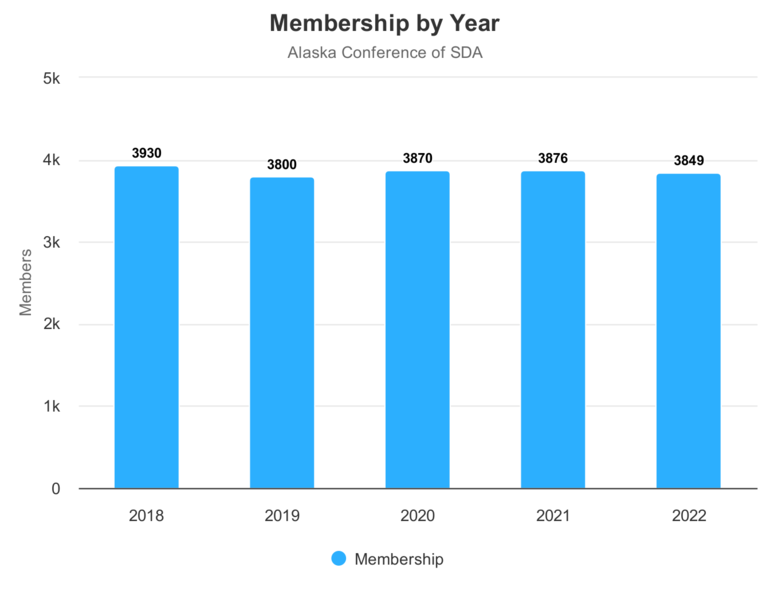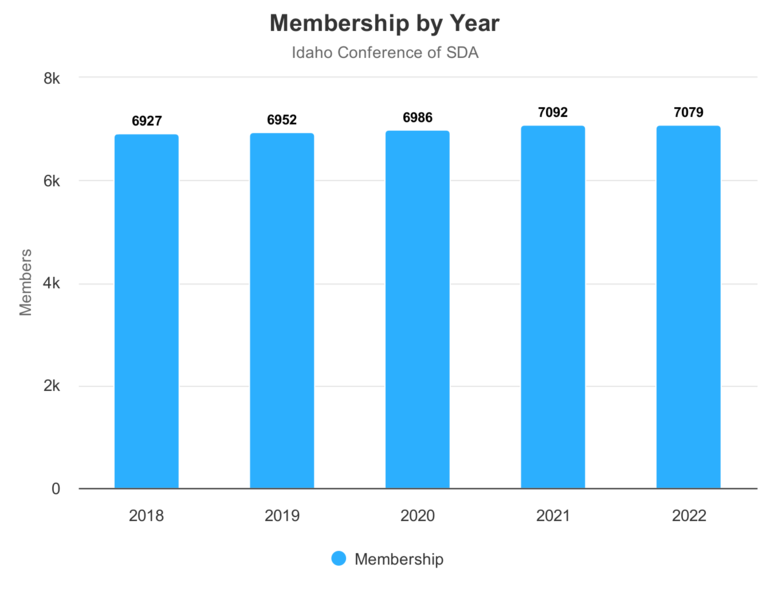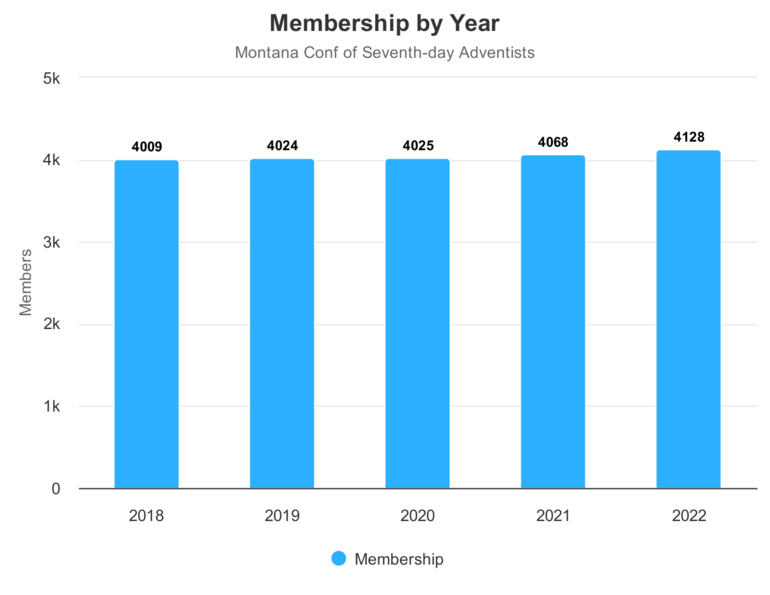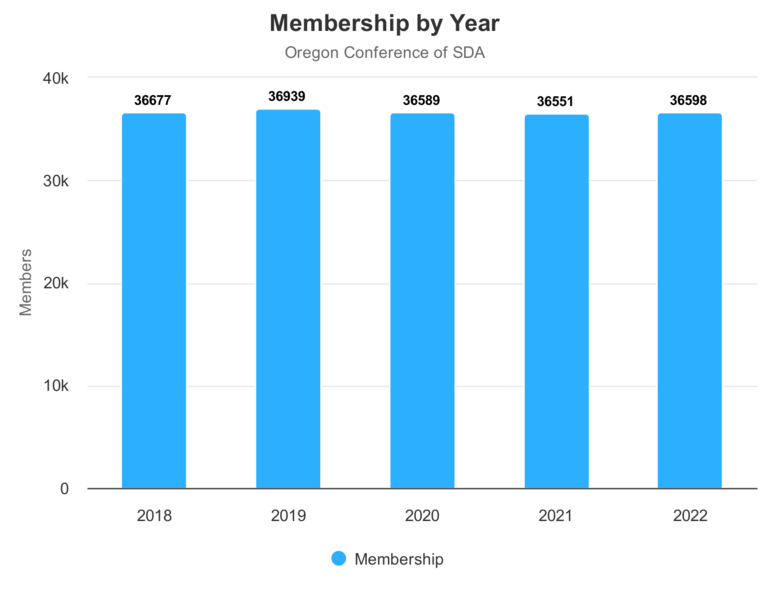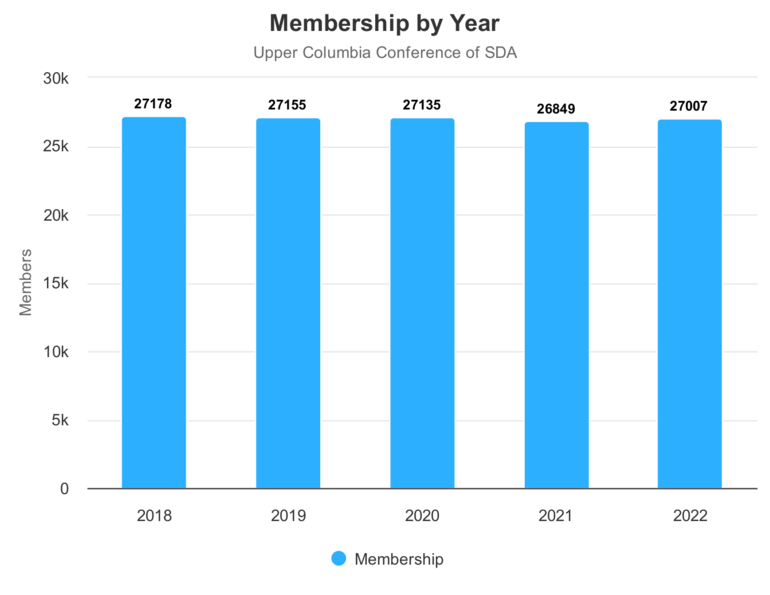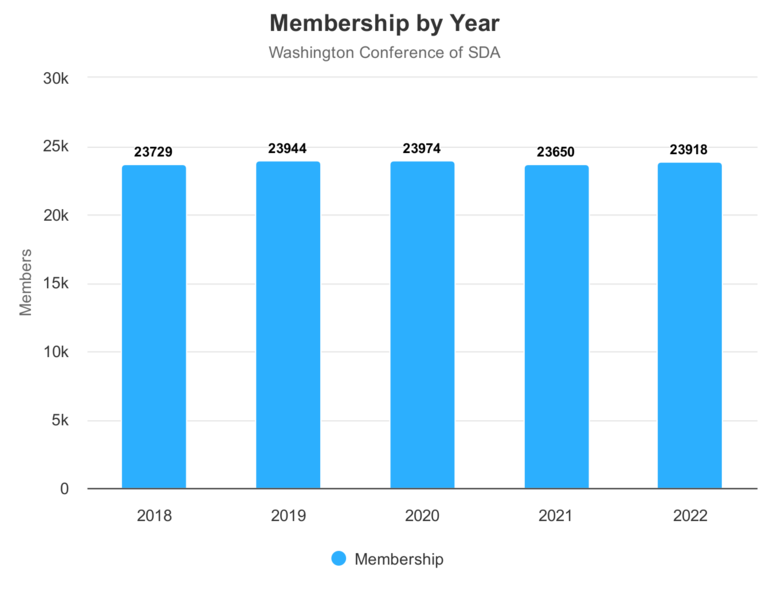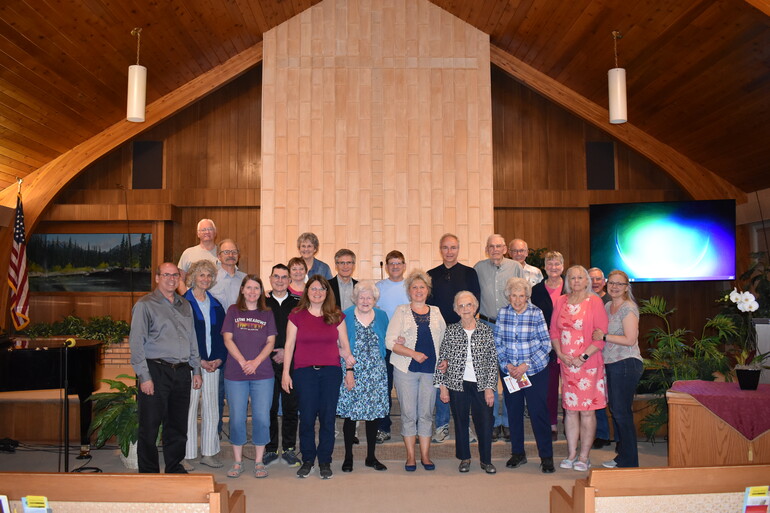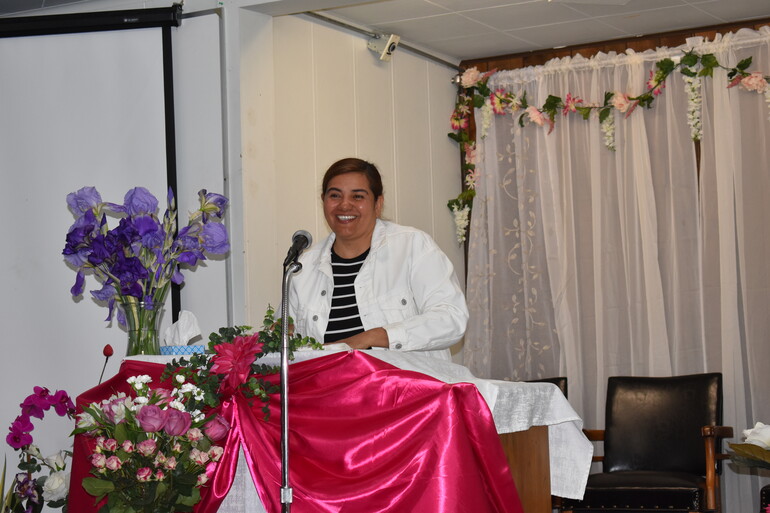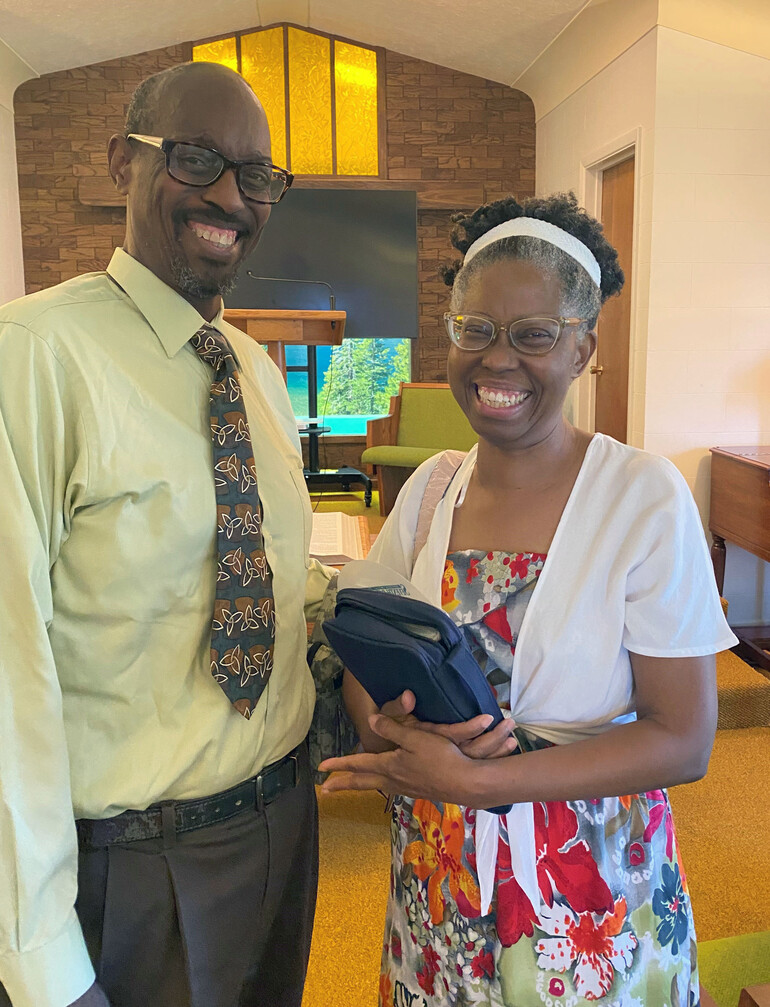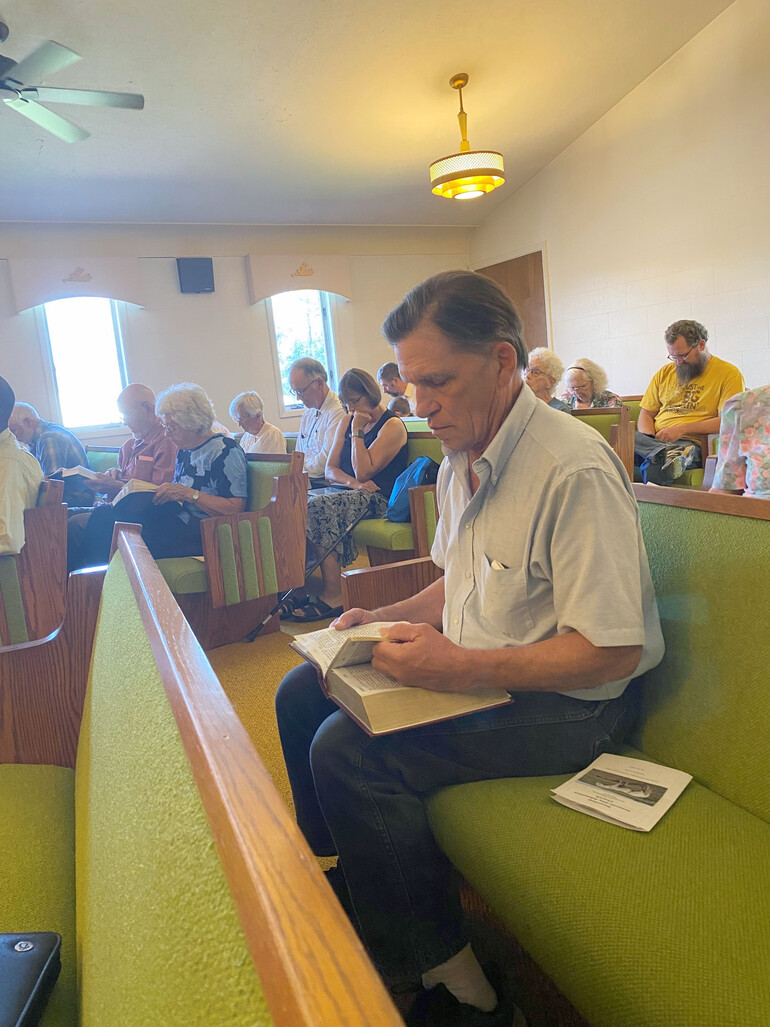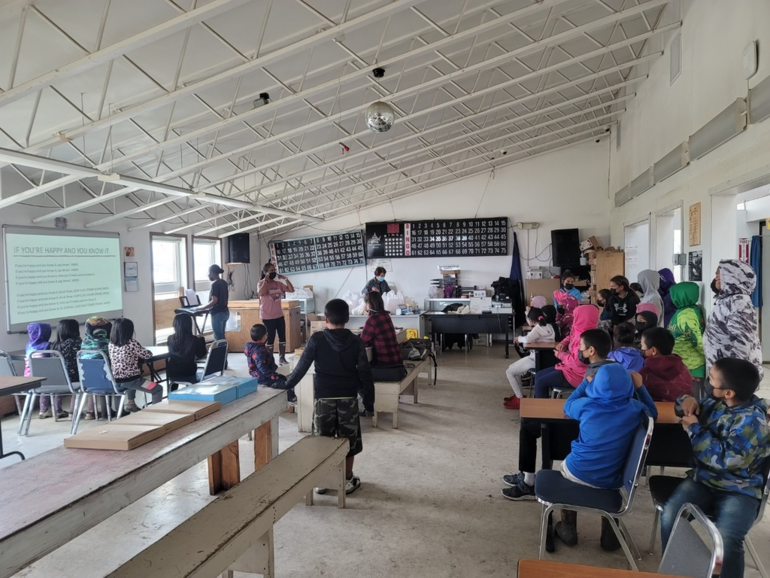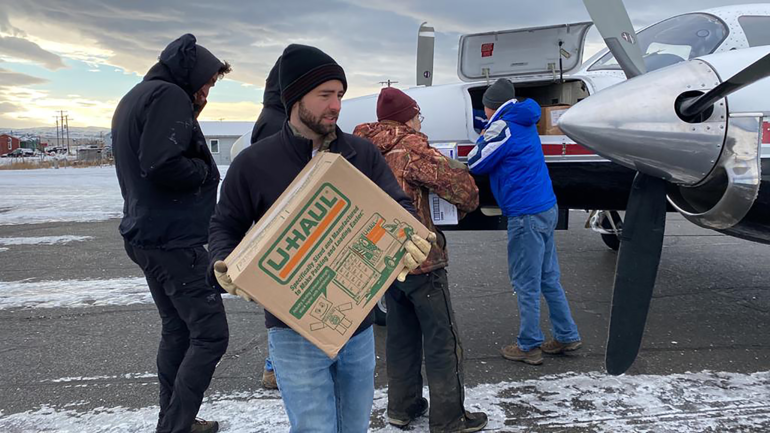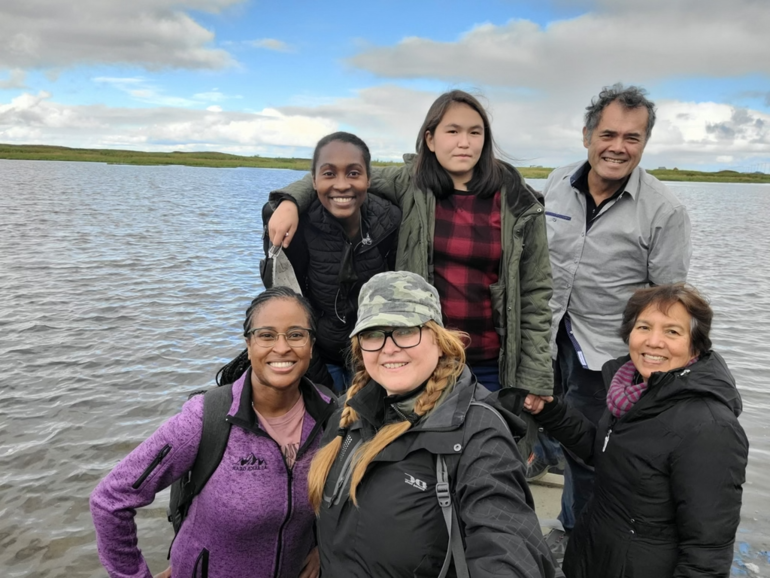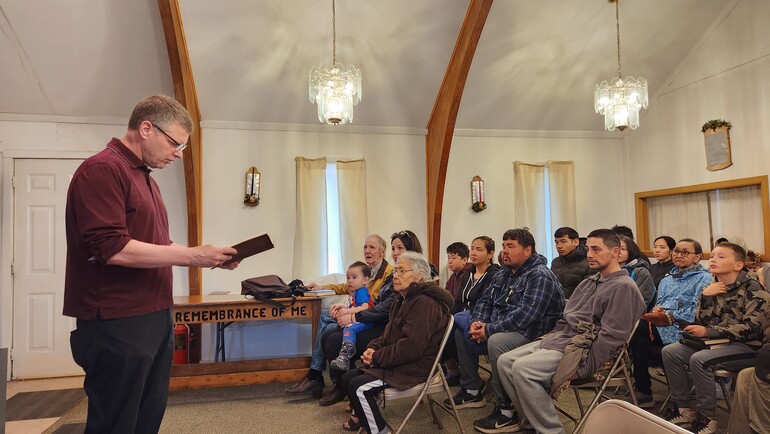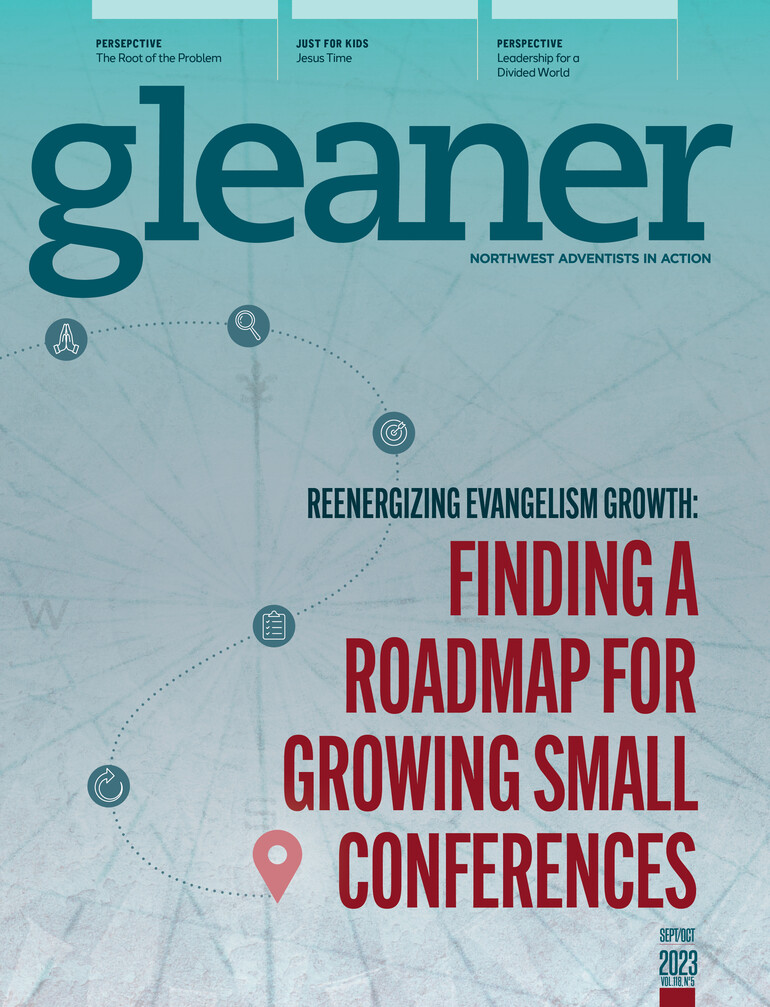The Pacific Northwest has a unique ministry partnership between large and small conferences. The large conferences — Oregon, Upper Columbia and Washington — each give a half percent of their annual tithe to help Idaho, Montana and Alaska Conferences.
The concept of “larger helping smaller” is present throughout the entire church organizational structure. For example, the North American Division makes an appropriation — an extra allowance — to financially help small and mid-sized conferences which have a smaller donor tithe base. Mission offerings, investment offerings and 13th Sabbath offerings are additional examples of providing extra funding to smaller church entities (classified as less than 15,000 members).
Each year, North Pacific Union leadership talks with each of the six conferences about their ministry needs and requests for the following year. It’s a quality time to check in and find ways to better serve a conference no matter its size.
Two years ago, the presidents of the large conferences talked about how their ministry support needs were minimal in comparison to the greater needs of small and mid-sized conferences.
“The presidents told us, ‘We want to see small conferences grow,’ and suggested the Union could focus more of our attention and resources on small conference growth,” said Bill McClendon, NPUC vice president for administration. “Through these conversations, we adopted a growth initiative in which we offered an additional $150,000, needed personnel access or training to small conferences for a specific year of evangelism, church growth and revitalization projects.”
Idaho Conference was on the verge of growth to the 7,000 member mark, and the extra funding and emphasis provided additional momentum for this mid-sized conference. Alaska and Montana, as the two conferences with the smallest memberships in the NPUC territory, had new opportunities to dream and implement evangelism plans.
"We like seeing what God is doing already," McClendon said.
As you'll see in the following stories, this investment is reenergizing evangelism growth in Idaho, Montana and Alaska ministry territories through public evangelism, church revitalization and friendship evangelism.
Celebrating Growth
When Idaho Conference leaders heard the NPUC’s offer of a 12- to 18-month evangelism partnership along with a $150,000, they prayerfully jumped at the opportunity.
“One evangelist can make a real dent in our evangelism budget for the year,” explained Don Klinger, Idaho Conference assistant to the president who oversees evangelism activities. “I’ve worked in small conferences throughout my 50-year career; this [funding and resource offer] helped us feel like we were part of a bigger conference.”
“In a small conference most of our churches are multi-church districts, we have a smaller pastoral team and we have limited budgets,” said David Prest, Idaho Conference president. “This partnership meant we had an infusion of $150,000 to equip and empower our members, our pastors and our church leaders to be able to better fulfill the mission.”
Idaho Conference embarked on Operation Exponential Growth in 2021, a plan to involve every interested church in evangelism through broadcasted meetings presented by McClendon and Tyler Long, an evangelist from Washington Conference. Then in 2023, Idaho partnered with It Is Written for The Great ReSet.
“We haven’t required our pastors or churches to do soul-winning and evangelism,” said Prest. "We've invited them to do anything that’s ethical and biblical to reach their community for Jesus Christ.”
Idaho Conference’s territory spans southern Idaho and eastern Oregon. The largest concentration of Adventists are in the Treasure Valley, encompassing Boise, Caldwell, Eagle, Emmett, Kuna, Meridian, Middleton and Nampa. South of the 45th parallel in Idaho, the conference is also responsible for six eastern counties of Oregon (Baker, Grant, Harney, Malheur, Union and Wallowa).
“Our geography is one of our greatest challenges,” Klinger said. “We have a widespread territory with rather large districts and very small communities. Outside of the Treasure Valley, there aren’t a lot of large communities to reach, and the smaller communities have their own unique challenges. With the meetings we had with John Bradshaw, Wes Peppers and others, even small churches could participate in the livestream.”
“When you look at all the churches in the Idaho Conference and those involved in The Great ReSet, we had just under 50% of our churches engaged,” Prest added. “This hasn’t ever been done, at least in recent history, in Idaho Conference.”
The eight Hispanic churches in Idaho Conference territory also worked together to be involved in evangelism and found a new sense of unity. Boise Hispanic Church notably had ten professions of faith. Typically, baptisms at the eight Hispanic churches account for 25% of baptisms within the conference.
Through the process of Operation Exponential Growth, Idaho Conference’s membership grew to more than 7,000.
“The growth to 7,000 members wasn’t our focus or our mission,” said Prest. “Our focus and mission is to share the gospel of Jesus Christ throughout southern Idaho and eastern Oregon. Operation Exponential Growth gave us resources to help us [do that].
Prest continued, “While we feel blessed and are thrilled with 7,000 members, by God’s grace we are on our way to 8,000! It’s not that numbers are important, but they do represent people we have reached for God’s Kingdom.”
Idaho Conference has a vision — which comes from the biblical teaching about the priesthood of all believers — for churches to be pastor-coached and lay-led to have members equipped for soul-winning. To encourage this process, Idaho Conference offered SALT — Soul-winning And Leadership Training offered in partnership with the evangelistic ministry of It Is Written — for 17 interested members to receive Bible worker training.
“We have people who are able to do things [as a Bible worker] that they weren’t able to do before,” Klinger said. “It’s a lot more effective [in] evangelism when you have lay people who are on fire and are supportive. They can say things that maybe the pastor can’t say and urge people in a way the pastor can’t urge them.”
So what’s next for Idaho Conference? More evangelism! Operation Exponential Growth and The Great ReSet gave Idaho Conference a foundation for future growth as a now mid-sized conference.
“My prayer is: ‘Lord, show us how to keep moving forward,’” Prest said. “We can’t do one-and-done evangelism; we need a cycle of evangelism. By God’s grace, we’ve demonstrated that public evangelism does work. However, we also recognize that we can’t just do public evangelism because there are segments of our population we aren’t reaching."
Prest continued, "We need to diversify our approach and find some creative methods. We’ve got to pray about this, experiment and learn from others about reaching a variety of generations and cultures.”
Revitalizing Evangelism
When Ken Norton and Jim Jenkins began their leadership roles in Montana Conference just over two years ago, there were seven pastoral districts filled and eight districts without a pastor.
The focus for the last two years has been getting to know the 38 — now 40 — churches in 15 districts across Montana, filling pastoral roles, building trust and casting a vision for renewing faith (revival) and restoring hope (evangelism).
The infusion of evangelism monies from NPUC came at the right time to kickstart a Grow Montana initiative.
“I’d like to say thank you from Montana Conference to the larger conferences,” Norton said. “We know they are the ones who helped fund this evangelism initiative for Alaska, Idaho and Montana. We recognize this is a sacrifice from other people to help grow the work that isn’t even in their territory, and it is much appreciated.”
“We turned [this evangelism funding opportunity] over to our pastors, and told them, ‘Dream big, this is a special year. Dream it, and we’ll fund it,’” Norton added.
“We’ve had fun turning our pastors loose with evangelism and watching churches come up with ideas,” Jenkins said. “For this particular season, this is the first time the whole state — every district — is involved in evangelism in a real way. They’ve talked with their boards and made plans.”
Jenkins continued, “In the past, we could maybe afford two series. This time, every district is planning some form of evangelism. This is a first for Montana.”
“When you can tell pastors money isn’t an object, it’s fun to approve the requests,” Norton said. “We’ve added our stash of evangelism funds to the mix for a total budget of about $350,000. We’re fueling their dreams.”
All across Montana, Adventist churches are making evangelism plans to help revitalize their church and community. These plans include gym nights, county fair outreach, financial literacy training, single parent ministry, elder care, podcast ministries, young adult church plants, Discover Bible Schools, Bible workers, mission trips, Christian concerts and low-powered radio ministry.
One of the biggest needs within Montana was to simply connect the congregations with one another. After listening and brainstorming, the conference put together a media package with a Mac Mini, a television stand and a 75-inch television for each church. NPUC helped with half the expense.
“This allows us to do major trainings and preparations,” Norton shared. “We can now do a Friday night training across the conference, and we’re 80–90% done setting up these systems. We are so spread out that technology is a key piece for connecting us.”
Sometimes, outreach isn’t so much about securing funding, but about being available to God’s leading.
In one unique opportunity, a pastor was invited to preach each Sunday at a local Methodist church after they lost their pastor. After nine months, the church asked him to teach them about Bible prophecy. The pastor held an evangelistic series in their church and the entire church now meets on Sabbath only. Several members have become Seventh-day Adventists with more studying for baptism.
“We’re on the front side of Grow Montana,” said Norton. “We don’t know the exact impact of it all yet.”
The Montana Conference office team, consisting of five full-time staff and one part-time staff, is praying about the future impact.
“We’ve started praying for one new family to join each of our 40 churches,” Jenkins said. “If you have an average attendance of 20-30, and they have just one new family who starts coming to church, it can make a tremendous difference to that church community. It will be a cool thing to see how God answers what we’ve been praying for.”
Montana leaders have an extra prayer: “We’re praying for God to raise up workers for His harvest.”
With 15 pastors to cover 40 churches, Montana Conference is trying test groups where the pastor serves as pastor-evangelist and the elders serve as church managers so ministry can continue to grow and thrive even if the pastor is not present.
One gentleman in eastern Montana began demonstrating the possibilities of this ministry model years ago. He started by popping in a sermon video to stand in for a church service by himself. He did this for years — he would watch and pray. Today, there are 20-plus people in attendance.
“My prayer is that this will be a new start; an encouragement to get back to doing what God’s called us to do,” Jenkins said. “I’m praying that God blesses in a way that encourages districts to keep doing evangelism, that this isn’t a one-time deal, that’s fun and a direction we want to keep going with evangelism and ministry.”
Finding Friendships
Everything in Alaska is an adventure — the geography, the boat-or-plane-only access to some areas, the rhythm of life, the extreme cost of living and the diversity of culture. Even ministry and evangelism are an adventure for the 36 congregations in this territory.
“We have to play a longer game here in Alaska,” said Kevin Miller, Alaska Conference president. “It’s not that we can’t do public evangelism, we just have to approach it differently. We have to look at evangelism in an integrated, long-term kind of way.”
Alaska leaders find the best ministry response when missionary-minded people enter a village of 500-800 people to live, be present, make friends and share their faith.
“Christ’s method alone is our mission in the bush,” said Tandi Perkins, Alaska Conference development director. “We try really hard to have people integrate into the village, who live there and are generally bi-vocational which provides an opportunity for friendships to develop and networks to be made.”
“You’re not going to come in, set up shop, present a Bible prophecy seminar and leave,” Miller said. “They want to know who you are and that you care about the community.”
One of the ways Daniel Jean-Francois, Alaska Conference ministerial director, and his wife, Laura, are investing in their neighborhood is by baking cakes to share with neighbors. Now their neighbors are giving back acts of kindness.
Jean-Francois, who additionally serves as pastor of Community Church and Northside Church in Anchorage, tells his church members to find simple, creative ways to interact with people they see on a regular basis.
“Those who are closest to you are who you are going to connect with ahead of an evangelism series,” he said. “We want to show the love of Christ and let people see who we are as Christians.”
On St. Lawrence Island, a mere 35 miles from Russia, the high levels of war- and family life-related anxieties are providing an opportunity to speak peace into anxious minds worried about alcoholism, harassment, abuse and more.
Ryan Rogers, Palmer Adventist Church pastor, was invited last fall to visit Gambell on the northern tip of St. Lawrence Island. Among other activities, he ended up playing basketball at the public school and hanging out with students.
“They just really wanted to talk with someone about how to have confidence when things are really scary,” Rogers said. “You couldn’t put a soft answer on it. It really challenged me to apply the gospel.”
On the same island, the church presence in the village of Savoonga just celebrated 10 baptisms after 10 years of ministry outreach.
“I don’t sense a big barrier to Adventists in general,” Rogers said. “Even though they may not be asking for it, with their deeply independent culture, we find people are starving for community. In the villages, if the church does something positive, the whole community feels it.”
Yet there is one large drawback in community building: Alaska’s transient nature fuels a lack of trust.
“People don’t expect me to stay,” Rogers said. “Evangelism doesn’t work well without good culture. When you go to villages, they don’t think you’re staying — and you don’t. There’s this mindset that you’re just going to leave them. We’re trying to build a culture where we are here to stay.”
Friendship evangelism is the strategic basis for NPUC-funded evangelism activities. Alaska Conference is providing virtual evangelism training to churches, hosting church revitalization trainings, and preparing for the arrival of the It Is Written ministry team in 2024. Nearly every church is connected for monthly Zoom training sessions.
"Pray, Plan and Prepare is the new Alaska conference evangelism strategy and motto, as we look forward to our 2024 Revelation Today spring evangelism series with John Bradshaw and It is Written," shared Ashwin Somasundram, Alaska Conference vice president for administration. "It will be both a conference-wide and statewide event and our hope is for over 100 new souls to be won for God’s kingdom."
This is an unusual opportunity in more than one way, and one which takes great preparation, Alaska leaders noted.
“Most of Alaska is off the grid,” Perkins said. “Much of our internet stability is questionable in the bush.”
With the introduction of Starlink internet service, this will be the first time every Adventist church in Alaska will be connected online. This growing infrastructure is already allowing nearly every church in the conference to connect for monthly Zoom trainings.
“Our people up here want to do good things for Jesus, so the response to evangelism training has been healthy and robust. They want to be a blessing to Alaska,” Miller said.
“We would be incredibly challenged to be out in the villages doing what we’re doing without the support of the Union, the North American Division and the General Conference,” Perkins said. "There are benefits to being a small conference and there are certainly challenges. One of them is that we cannot do it all ourselves. We need mission-minded people.”
“We still have 200 villages we’ve got to bring the three angels' message to,” Miller continued. “We have to grow in our innovative thinking. We have to be in the moment, in the present, looking to the future and not dragging our feet in the past.”
“My prayer going forward is to remain faithful to God and what He is doing,” Miller concluded. “Our tithe is growing, our ministries are growing, our schools are growing, the Arctic Mission is growing. There are a lot of things happening here and the Lord is telling us we’re moving in the right direction.”
5 Steps to Revitalizing Church Growth
Wherever your church is located and whatever size your congregation, there are opportunities to invest in church growth and revitalization. Here are five steps for getting started:
- Start with Prayer. Begin with a dedicated season of prayer, seeking the Holy Spirit’s guidance and blessing for the church's growth and revitalization. Engage in a prayer session lasting 10, 21, 30, 40 or 100 days, fostering a deep reliance on God's wisdom and power. You and your church could also engage in prayer-walking in specific neighborhoods.
- Survey Your Community's Needs. Conduct a community interest survey to better understand the needs and aspirations of the community. Utilize various methods such as door-to-door interviews, public events, online surveys, windshield surveys, driving through the community or arranging conversations with city and community leaders. Pray through the results.
- Create a Missional Vision: Formulate a clear vision which incorporates the insights gained from the community survey. Engage the leadership and congregation in prayerful dialogue to develop a compelling vision which aligns with the community's needs and inspires a collective commitment to growth.
- Develop an Action Plan: Based on the community survey findings and the church's vision, create a detailed action plan outlining specific steps, initiatives and measurable goals. This plan should encompass strategic outreach, relevant programming, community engagement, discipleship opportunities and empowerment of leaders to carry out the plan effectively.
- Invest in Long-Term Discipleship: Empowering leaders, utilizing spiritual gifts, cultivating passionate spirituality, establishing effective structures, inspiring worship, fostering holistic small groups, engaging in need-oriented evangelism and nurturing loving relationships are all components of nurturing a healthy, thriving and impactful church community.





